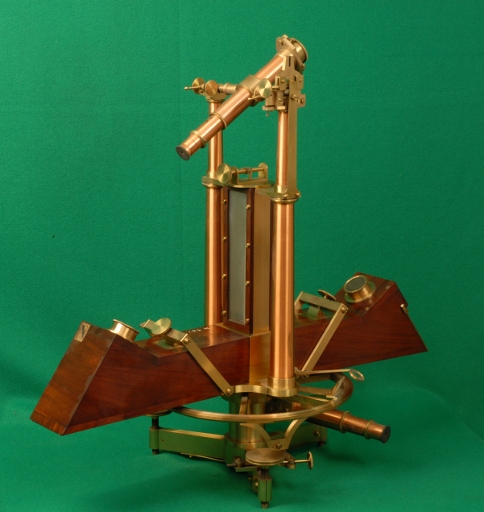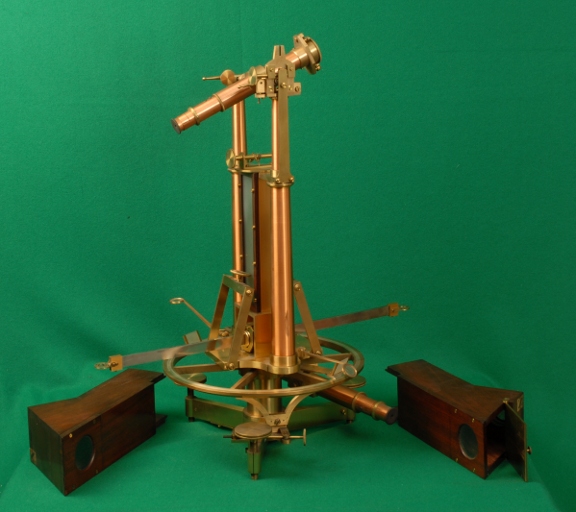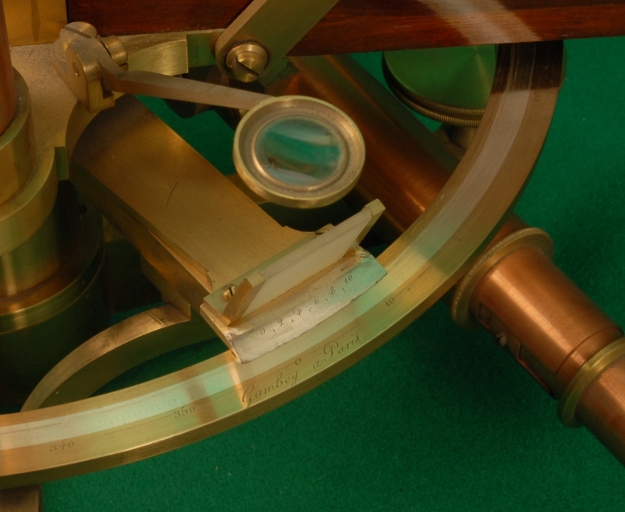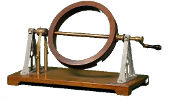» Gambey magnetic Declination Compass (0559)
Immagini



DESCRIPTION
Exhibit 559 is a compass for measuring the declination of the earth's magnetic field designed and built by Henry Prudence Gambey (1787-1847)in Paris. The declination is the azimuthal angle between the earth's astronomical meridian and the local meridian of the earth's magnetic field.The base is a tripod on three adjustable screws on which is fixed a telescope that is 30.2 cm long. Above the base there is an azimuthal ring graduated in degrees that can rotate in the horizontal plane. Attached to the ring, there are two columns that support a long magnetic bar suspended by silk threads enclosed in a wood box with glass walls. A second telescope of length 22.5 cm is placed above the columns and is free to rotate in a vertical plane for observing a reference star and also the magnetic bar which is normally protected by the removable wood cases. These cases have openings on top for observing the magnetic bar with the upper telescope operating as a microscope and two on the bottom for illuminating the bar. There is also an opening on the box marked "Sud" useful for manually reducing the oscillations of the suspended magnetic bar.
In operation the Gambey compass had two disadvantages: the length of the bar led to excessive oscillations and the result was a long duration of a measurement (of the order of an hour!).
The Gambey compass was superseded by the Kew magnetometer which utilized a shorter magnetic bar.
ISCRIZIONI
- Gambey à Paris
Dati Catalografici
| Data di costruzione: | --- |
|---|---|
| Data di carico: | 1835-05-25 |
| Nr. Inventario: | 907 (Generale dal 1874) 402 (Antico inv. Gabinetto Fis) |
| Costruttore: | Henry Prudence Gambey |
| Materiale: | ottone, legno, vetro, metallo |
| Dimensioni: | 61 cm x 29 cm x 55 cm |
| Conservazione: | buono (E' rotto uno dei vetri che chiudono la parte centrale) |
